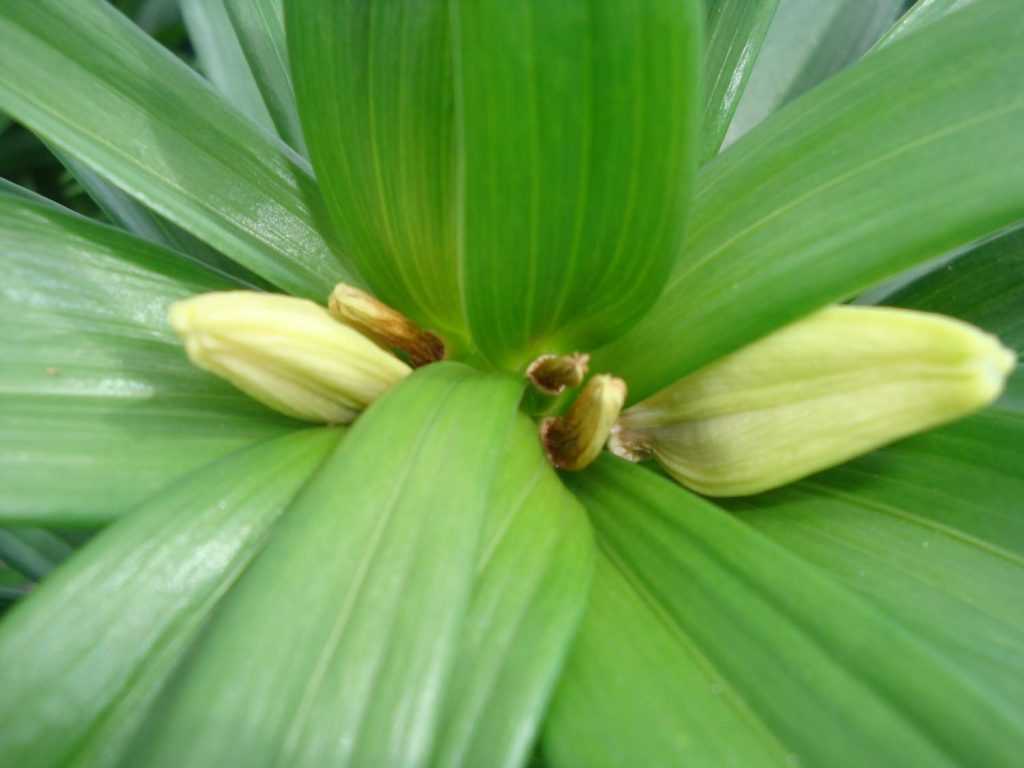
By Erik Runkle
Many of the crops we grow in greenhouses are for their flowers. In fact, most floriculture crops are not marketable to consumers unless they are in flower, or very close to it. If flowers do not develop normally, or abort prematurely, the crop may be less marketable or in some cases, not saleable.
There are many potential causes to flower bud abortion, including insects and mites that feed on flower buds and shoot tips, or pathogens that attack a root system, making a plant less able to support the water and fertility demands of the developing flowers. Below is a list of some environmental and cultural factors that can contribute to, or cause, flower bud abortion.
Insufficient light- Flowers require a relatively large supply of energy to develop normally. The energy can come from stored carbohydrates, such as from bulbs and tubers, and light that drives photosynthesis. When the amount of light is not sufficient to support the energy demands of the flowers, they can abort. Usually, low-light induced flower bud abortion only occurs under a low daily light integral and thus, only occurs during the winter. However, if crops are initially grown under a high (Daily Light Integral) DLI and have a large number of flower buds, and then are transferred to a low DLI, the lower DLI may not provide enough energy for all of the flowers to continue to develop.
Unsuitable photoperiod- Many floriculture crops have a photoperiodic flowering response, which means that short or long days (long or short nights) accelerate or are required for flowering. For most photoperiodic crops, once flowers have initiated, they continue to develop if other growing conditions are favorable. However, some crops with an obligate photoperiodic flowering response (for example, plants that require long days for flowering) require continual favorable photoperiods for flowers to continue to develop.
High temperature-Excessively warm temperatures can initiate stress responses in plants, which are processes meant to ensure survival. In addition, because plants develop progressively faster with temperature, the energy demand to support developing shoots (including flowers) also increases with temperature. Therefore, high temperatures, especially combined with low light, can cause flower bud abortion.
Nutrient (especially calcium and boron) deficiency- Calcium is a macronutrient and boron is a micronutrient that are both components of cell walls and developing flowers. When deficient in one or both of these elements, flower buds can abort. In some instances, a calcium or boron deficiency can occur even when present in sufficient amounts in the substrate. Plant uptake of nutrients occurs with water uptake. If conditions exist such that there is little uptake of water (for example, high humidity and no air movement), plant tissues may be nutrient deficient, leading to bud abortion.
Ethylene- Ethylene is a gaseous hormone that plants generate when stressed, which can abort flowers and flower buds at very low concentrations. Ethylene is also an unwanted contaminant generated by incomplete combustion of natural gas and propane. Other sources of ethylene include decomposing organic material and ripening fruit.
Drought stress- Flower buds require an adequate amount of water to support rapid cell expansion. Usually, a mild to moderate water stress will not jeopardize flowers, but a severe water stress can lead to flower bud abortion. Water stress is sometimes used as a height control technique, but as plants approach marketability, ensure water is not withheld to the point of wilting.
Erik Runkle is professor and floriculture extension specialist in the department of horticulture at Michigan State University. He can be reached at runkleer@msu.edu.
